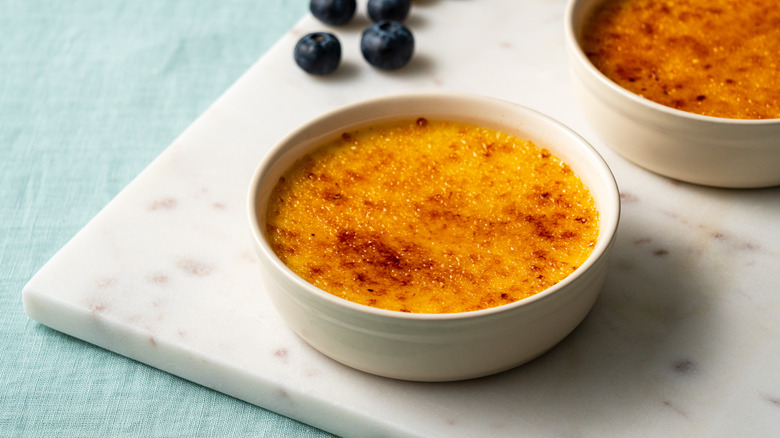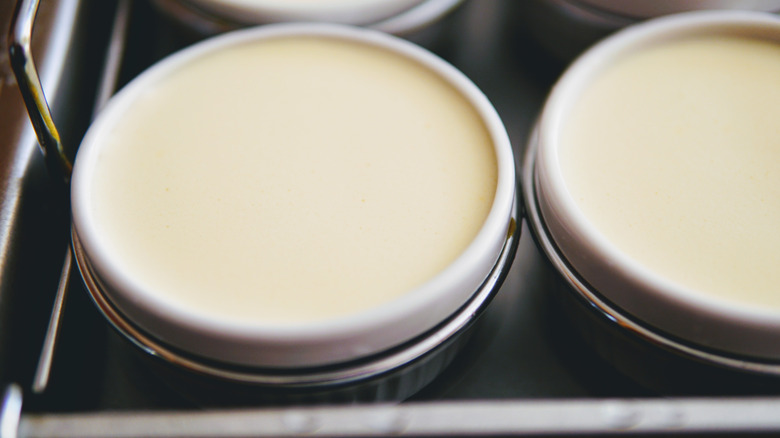The Simple Tip To Avoid Getting Water In Crème Brûlée
If you've ever sunk a spoon into a rich, creamy crème brûlée, then you know how delicious this delicate dessert can be. A vanilla bean-infused cream and egg yolk custard that's typically poured into individual ramekins, baked until just set but still jiggly, chilled, and then topped with a generous layer of granulated sugar that's caramelized with a blow torch or the oven's broiler setting. Crème brûlée is truly a celebration of contrasts, with its smooth pudding set against the crackliness of the sugar lid and its mild sweetness accentuated by the near-bitterness of the burnt sugar.
Typically thought of as a French dish considering its name — which translates to "burnt cream" — crème brûlée's origins are actually not that easy to trace, according to Taste Atlas, with Spain and England also claiming the dish as their own. But wherever the dessert got its start, it remains a popular one today, and although it sounds intimidating, crème brûlée isn't actually that difficult to make at home. It's usually cooked in a water bath — aka a bain-marie — in order to gently and evenly heat the custards, so you'll want to avoid any hot water actually getting inside those ramekins by employing the following handy tip.
Create an aluminum foil fence around crème brûlée ramekins
According to Bon Appétit, baking crème brûlées in a hot water bath is the best way to ensure that the pudding is cooked evenly and that it retains its silky texture. Because the water that surrounds the ramekins conducts heat and then transfers it to the desserts, the delicate custards can come up to temperature slowly and avoid any risk of the eggs in the mix scrambling and leaving the dessert grainy (via The Little Aussie Bakery). But as noted by Bon Appétit, a hot water bath — simply a baking dish into which the ramekins have been placed (via What's Cooking America) — can be a "danger zone" for the custards, with the threat of the hot water boiling and actually spilling over into the custard ramekins.
Any water that makes its way into baking crème brûlée will affect the dish's outcome, causing the custards to go soggy or mottled on their tops. Therefore, Bon Appétit recommends insuring against this threat by wrapping each ramekin in a tin foil "fence" that reaches higher than the ramekin. With their little foil jackets, your beautiful crème brûlées will remain water-free as they bake.

